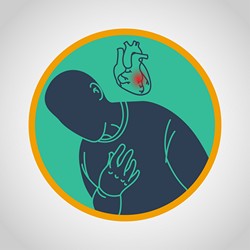Genomic variants implicated in cardiovascular diseases
It is a well-established fact that a positive family history is a significant risk factor for cardiovascular diseases. However, only recent genome‐wide association studies have provided the necessary genetic proof. Currently, over 90 CAD and several genomic risk loci have been associated with disease manifestation. Some of these genes work through known risk factors such as lipids, but for the majority of risk variants, further insight is required to decipher their implication in atherosclerosis. The EU-funded CVGENES-AT-TARGET collaborative project exploited existing population genetic studies to fill in the gap with respect to identification and characterisation of therapeutically relevant targets for atherosclerotic disease. Researchers applied in silico approaches to omics data to identify genes and pathways that may be implicated in the mechanisms leading to CAD and stroke. Meta-analysis produced a total of 16 novel risk loci for CAD represented by common single nucleotide polymorphiysms and implicated biological processes in vessel walls. Of special interest was a genetic variant of the gene for histone deacetylase 9 (HDAC9) and its impact on vascular risk. HDAC9, along with eight other gene candidates, were found to be implicated in atherogenesis, its progression and plaque characteristics in mouse models. Two additional pathways were functionally characterised at the cellular level, as well as in animal disease models and patient tissues. Scientists identified small molecules that interfered with these CAD/stroke causing pathways, and tested their efficacy in atherosclerosis-prone mice. Interestingly, some of the identified loci were associated with other diseases or traits, warranting further investigation into the implication of the observed pleiotropy in the pathogenesis of atherosclerosis and ischaemic events. Furthermore, to validate the sex-specific manifestation of CAD, the consortium performed a comprehensive X chromosome-wide meta-analysis of tens of thousands of patients and controls. However, results showed no associations of X chromosomal variants with CAD. Taken together, the CVGENES-AT-TARGET study provided unprecedented data on genes and regulatory mechanisms of CAD risk loci, alongside with a novel mechanistic insight into atherosclerosis. The generated information advances our understanding of cardiovascular disease pathophysiology and opens new roads for the development of novel therapies.







